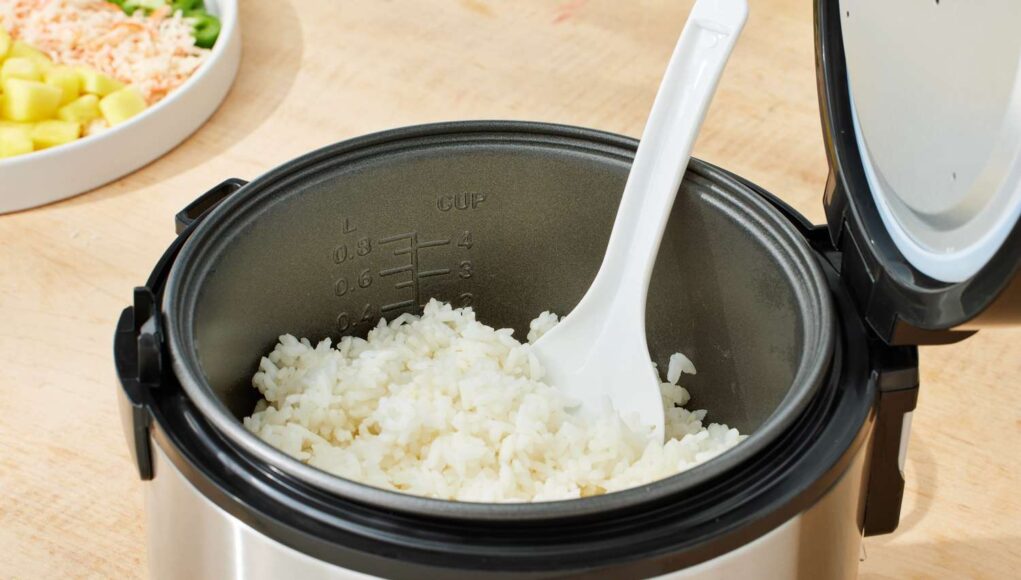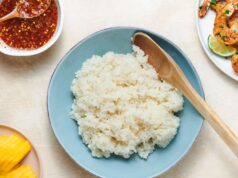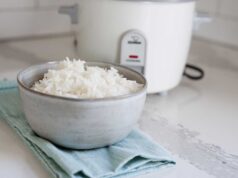Learning **how to cook sushi rice in a rice cooker** is a game-changer, especially if youre someone who loves perfectly sticky, flavorful rice paired with sashimi, vegetables, or other Japanese delicacies. Traditional sushi rice requires specific textures and tastes that can be challenging to achieve when cooked on a stovetop. With the help of a rice cooker, you can easily replicate the authentic fluffy and sticky texture of sushi rice while saving time and energy. This guide will walk you through the step-by-step process to perfect sushi rice every time.

What Sets Sushi Rice Apart?
Sushi rice, known as ‘shari’ or ‘sumeshi’ in Japanese, is much more than just steamed white rice. It’s a combination of short-grain or medium-grain rice seasoned with a blend of rice vinegar, sugar, and salt, which gives it that signature tang and gentle sweetness. Unlike regular rice, **sushi rice** needs a slight stickiness to hold its shape when rolled into sushi but not so much that it becomes mushy. This balance is what makes the process of making sushi rice so nuanced, and why a rice cooker becomes immensely helpful.
Ingredients Youll Need
- 2 cups of short-grain or medium-grain rice
- 2 1/2 cups of water
- 1/2 cup of rice vinegar
- 2 tablespoons of sugar
- 1 teaspoon of salt
Essential Cookware and Tools
Before diving into the process, gather all the necessary cookware. The right tools ensure you achieve the best results while making your work easier.
- A rice cooker
- A knife for precise tasks
- A durable cutting board
Step-by-Step Guide to Cooking Sushi Rice in a Rice Cooker
1. Rinse the Rice
Start by thoroughly rinsing the rice to remove excess starch. Place two cups of short-grain or medium-grain rice in a bowl, add water, and use your hands to swirl it gently. Drain the water and repeat until the water runs almost clear. Rinsing is crucial for achieving the right texture in your **sushi rice**.
2. Soak the Rice
After rinsing, soak the rice in water for approximately 30 minutes. This step allows the rice grains to absorb water evenly, which leads to that soft and tender texture we associate with perfectly cooked sushi rice.
3. Measure Water and Start Cooking
Transfer the soaked rice to your rice cooker. For every two cups of rice, add 2 1/2 cups of water (be sure to adhere to your rice cooker’s guidelines). Turn on your **rice cooker** and let it do its work. This hands-free method ensures consistency and ease.
4. Prepare the Sushi Vinegar
While the rice is cooking, prepare your seasoning by mixing 1/2 cup rice vinegar, 2 tablespoons sugar, and 1 teaspoon salt in a saucepan. Heat gently on the stove to dissolve the sugar and salt completely, but avoid boiling. Once ready, set it aside to cool.
5. Fluff the Rice and Add Seasoning
Once the rice cooker clicks to ‘warm’ mode (or once it has finished cooking), fluff the rice using a rice paddle or fork. Be gentle to avoid smashing the grains. As the rice cools slightly, drizzle the prepared vinegar mixture over it, folding it delicately to evenly distribute the seasoning. For an extra touch of authenticity, use a wooden paddle or spoon.
6. Let the Rice Cool
You cant use hot rice for sushi rolls, as it may make the nori soggy or melt other ingredients. Allow the seasoned rice to cool to room temperature, but keep it covered with a damp cloth to prevent it from drying out while cooling.
Mastering the Art of Sushi Making
Now that you know **how to cook sushi rice in a rice cooker**, the foundation is set for making delicious sushi rolls, hand rolls, or even sushi bowls. Pair your sushi rice with fresh ingredients like raw fish, avocado, or pickled vegetables. Additionally, sushi rice is versatile enough to be used in non-traditional dishes such as pok bowls or as a base for Asian-inspired meals.
Troubleshooting Common Issues
1. Rice is Too Hard
If your cooked rice is hard, you may not be adding enough water during the cooking process. Adjust the water-to-rice ratio and make sure the rice has been soaked long enough before cooking.
2. Rice is Too Mushy
Mushy rice can result from using too much water. Be precise with your measurements and ensure youre using the correct grain of rice. Avoid long-grain rice as it doesnt have the sticky quality required for sushi.
Cleaning and Maintaining Your Cookware
Regular maintenance of your cookware ensures it stays in optimal condition for years to come. For cleaning your rice cooker, use a gentle cookware cleaner. Dont forget to care for your cutting board by applying a good cutting board oil to maintain its durability.

Related Reads
For more exciting rice cooker recipes, you can also explore options like Rice Cooker Mac and Cheese.
By mastering the techniques shared above, youll feel confident in creating authentic sushi rice to elevate your home-cooked meals. Give it a try, and dont hesitate to experiment with the recipe to match your taste preferences!
This article contains affiliate links. We may earn a commission at no extra cost to you.











